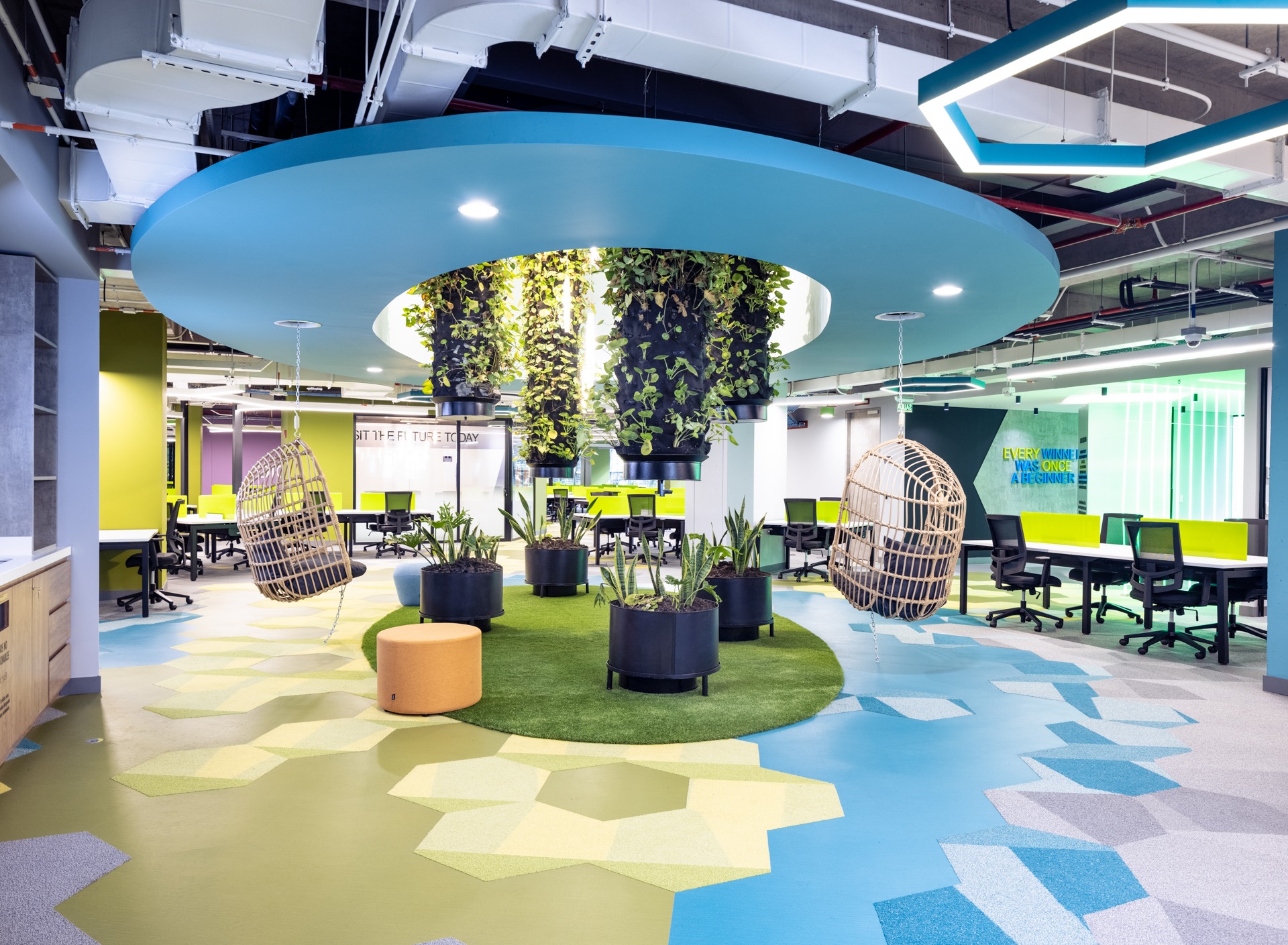Office Ergonomics: Not Just A Well-Designed Chair
Ergonomics is regularly misunderstood as a concept that relates purely to furniture design. However, the scope of this field of study, first coined by Polish scholar Wojciech Jastrzębowski as early as 1857 though not popularized until the translation of his book was reprinted in English in 1997, stretches beyond purposely-designed chairs and can — or rather should — be applied to the whole work environment. But why? And more importantly, how do we achieve the bigger picture of a holistically-ergonomic office?
Why Create an Ergonomic Workspace?
It’s no secret that office workers spend a great deal of time sitting in front of a computer screen. A sedentary career coupled with badly-designed office spaces can impair workers’ well-being, with common complaints of back pain from slouching, carpal tunnel syndrome, eye strain, and lower and upper arm pain from repetitive motions.
Research has shown that poor office ergonomics is not only linked to physical ailments but poor mental health, too. Sitting for long periods can reduce blood flow to the brain, slowing brain function. Bad news for the worker and bad news for business as productivity is affected as a consequence.
OSHA has cited that musculoskeletal disorders and ergonomic injuries have direct costs of between US$15 billion to US$20 billion per year. This sum comes from both the company costs and the losses a worker will experience due to sick days and rehabilitation. The good news? Much of the problem can be avoided.
How to Create an Ergonomic Workspace
Now you know why it is essential to look at office ergonomics from a holistic viewpoint rather than just providing good ergonomic chairs and maybe a height-adjustable desk. We need to look at the bigger picture, where the entire work environment is carefully designed to save employees’ health, maintain productivity, and reduce costs for both the worker and the business.
Modern companies are already evolving to eliminate fluorescent lighting, rows of identical booths, and cold air on blast year-round to leverage natural lighting, airflow, and different areas for different kinds of work in the office where workers can flit freely between spaces in a bid to enhance their well-being. Here’s how to create an ergonomic office:
- Layout
Office workers need to add an element of motion into their day. Physical activity is essential for good health, circulation, and therefore mental performance. The UN office in Valencia, Spain, cleverly positioned its cafeteria separately from the main building, with a meandering path that takes its workers from one to the other. This compels staff to add to their step count to take a coffee or a bite.
Even if you have no intention to build an office from the ground up, there are some takeaways from the UN office concept that can be leveraged — by creating a labyrinth of office furniture rather than rows, office workers will find that to get from A to B they will cover more distance, increasing the amount of physical activity that can be squeezed into their day.
- A Space for Breaks
Frequent breaks should comprise part of the company culture, since they improve workers’ job satisfaction, boost productivity, and contribute to better mental and physical health, according to Michigan State University. The question is how office design can be linked to quality breaks.
While some people crave social interaction, others need a place to rest and disconnect away from the bustling office environment and computer monitors. For this reason, various spaces destined purely for breaks can be a welcome addition to any office. The first option is a quiet room with comfortable (ergonomic) furniture, low lighting, and a distinct lack of electronics. More colorful and activity-based rooms or areas are an option to cater to the team’s social branch, just like in TripAdvisor’s Needham office.
- Traditional Ergonomics
Although it is important to look at office design from a more holistic point of view, from within company culture, work areas that incorporate ergonomic workstations should not be overlooked. Various desk heights, adjustable ones, or standing desks come to mind. As does the option to pick up a riser for the office chair. Correct lumbar support and armrests are further considerations when it comes to furniture.
In environments where screentime could develop into a concern, mitigating risk by keeping computer screens at eye level, offering employees the option to use a footrest or a keyboard tray, and fine-tuning the furniture ensembles all contribute toward a healthier, more productive, and more cost-effective business model.
Recommended Course of Action
Even before embarking on a design project that promises to change the office layout and incorporate spaces that are specifically designed with worker well-being in mind, instilling a company culture that encourages workers to take control of their workday to the extent of which it is a possibility is the recommended starting line. Forbes looks at the unwritten rules of great company culture, while OpenSourcedWorkplace reminds us of the physical and mental benefits of prioritizing ergonomics in company culture.
After establishing and following through with an effective company culture plan, you can work with a team of experienced designers with one thing in mind: your business. At AEI Spaces, we have a team of dedicated designers who know that for a business to be profitable, it needs to care for its greatest asset: its people. And in office design, that starts with ergonomics.
Conclusions
When most people think of ergonomics, they think of a well-designed chair intended to support the lower back and correct posture. However, the field of ergonomics is much broader than you might expect, and includes looking at the office from a holistic point of view and considering:
- The layout of your facility to encourage movement
- Spaces that entice people away from their desks during break times
- Ergonomic furniture beyond just chairs
These aspects of ergonomics play a key role in the physical and mental well-being of your team, all the while reducing injury and improving productivity. What is good for your people is good for your business.


